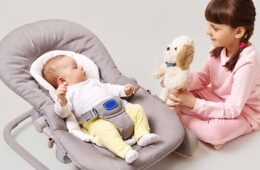Are Babies Just Sleeping Worse These Days?

Pediatric sleep, our understanding of it, and how we go about tackling it has changed monumentally over the past thirty years. Our well-intentioned changes to make sleeping safer has indeed made it safer, but also more difficult, for babies to sleep.
We have taken away a lot of baby’s soothing techniques in the past thirty years. Babies tend to sleep a lot better on their stomachs and up until the 1990’s with the launching of Safe to Sleep (formerly Back to Sleep) campaign, babies were often laid face down in cribs to sleep with cozy items like blankets. There is a reason why most adults today don’t sleep on their backs like Dracula; it’s not how we were programmed and it’s not super comfortable. And today if you mention putting a blanket into a crib with an infant, you will get roughly the same reaction as if you announced that you were putting a leopard into bed with your baby.
The Safe to Sleep campaign was launched to reduce the rate of SIDS deaths and it reduced the total number in America by 50%. Babies who sleep on their backs have lower arousal thresholds, meaning they wake up easier. So while sleeping on their back may not be the most comfortable or natural way for baby to sleep, it is considered by the AAP to be the safest. There are certainly parents who still choose to place their babies belly down in their crib once the child is a few months old and can lift and turn their head, but the official recommendation is for baby to be put on their back to sleep. Once baby can roll, they will find a sleeping position that works best for them, which is usually the stomach or side.
By Hannah Mira, Founder of Bonsoir Bebe Sleep Consulting
Let’s Glow
Glow is here for you on your path to pregnancy
Glow helps you navigate your fertility journey with smart tools, personalized insights, and guidance from medical experts who understand what matters most.
25+ million
Users
4.8 stars
200k+ app ratings
20+
Medical advisors



